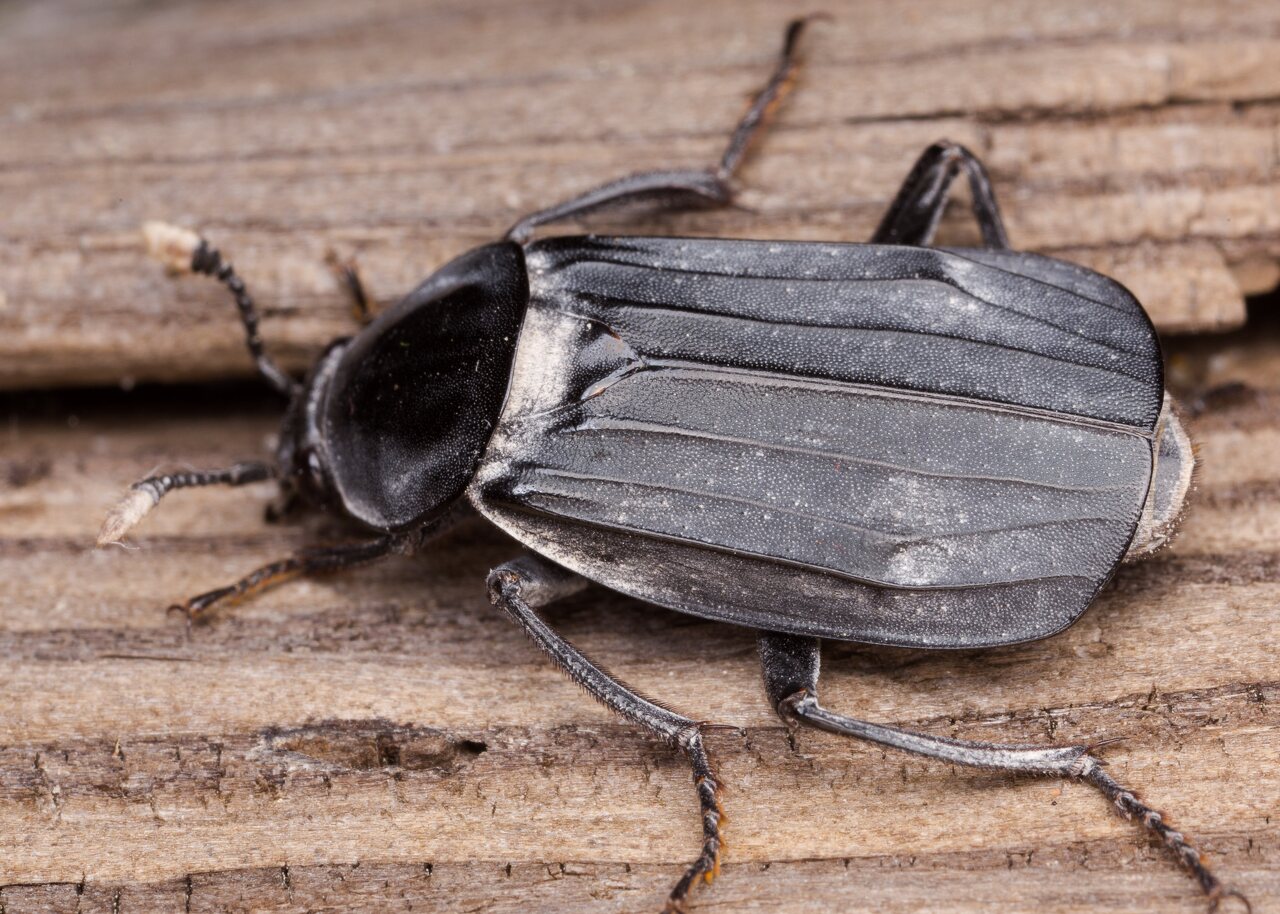
Necrodes littoralis female · juodasis maitvabalis ♀
- shore sexton beetle
- Ufer-Totengräber, Ufer-Aaskäfer
- juodasis maitvabalis
- oeveraaskever, oeverdoodgraver, zwarte aaskever
- padliniec pospolity
This is a generally common species throughout Europe extending north to southern Scandinavia and east through Siberia to China; it also occurs in northwest Africa but is generally absent further east.
Unlike Nicrophorus they do not bury carrion for their larvae, rather they oviposit in several cells in the ground near to the food and the larvae, which emerge after only a few days, make their way into the host material and develop within, often on large carcasses. Adults remain among the carrion predating eggs and larvae of other insects, especially diptera, and will feed macerated food to the first instar larvae in much the same way as Nicrophorus, but beyond the first instar stage the larvae are left to live independently. Larval development is rapid and each of the three instars takes between one and two weeks to complete, when fully grown they move into the soil adjacent to the carcass and pupate in an underground cell. Adults will often be found with mites attached; these are not parasites but will leave the beetle when it arrives at carrion and predate fly eggs and larvae so reducing competition for food when the larvae appear, in general flies will arrive earlier than the beetles and will oviposit immediately and so the mites are a great advantage. Adults have also been observed to attack snails and worms etc., either to consume them or to lay eggs beneath the remains.
This large black species superficially resembles Nicrophorus humator but is readily distinguished by the elongate antennal club and the transverse ridge connecting the third and fourth elytral carinae. 15-30mm. Entirely black (when mature) with the last three antennal segments red. Head smooth, with a variously developed longitudinal impression beside each eye, and produced anterior to large convex eyes. Antennae inserted laterally under the clypeus; scape weakly curved and broadened towards the apex, as long as segments 2 and 3 combined, club elongate, loose and only slightly broader then segments 7 and 8. Pronotum rounded, without distinct angles, finely punctured and only obscurely depressed, usually with stronger punctures close to the lateral and basal margins. Scutellum very large; triangular overall but with the lateral margins obtusely angled towards the apex, surface finely and quite densely punctured. Elytra elongate and widened to a rounded apical angle, lateral margins narrowly explanate and apical margin rounded, leaving three or four abdominal tergites exposed. Surface finely and densely punctured throughout, each elytron with four longitudinal ridges (including the sutural), the third and fourth joined by a transverse swelling in the apical half. Legs long and slender, front and hind tibiae straight, middle tibia curved, all tibiae with two strong apical spines, tarsi 5-segmented. Male with basal protarsal segments widened.
Kūnas 15 - 25 mm. Juodas. Priešnugarėlė ovali, šonai išlenkti. Akys stambios, išgaubtos. Antenų buoželės 3 galiniai nareliai rausvi. Vabalų ir lervų aptinkama stambių žinduolių dvėsenoje. Vystosi kaip ir duobkasiai. Lietuvoje nedažnas.
‥
0 comments
Add a comment
Comments